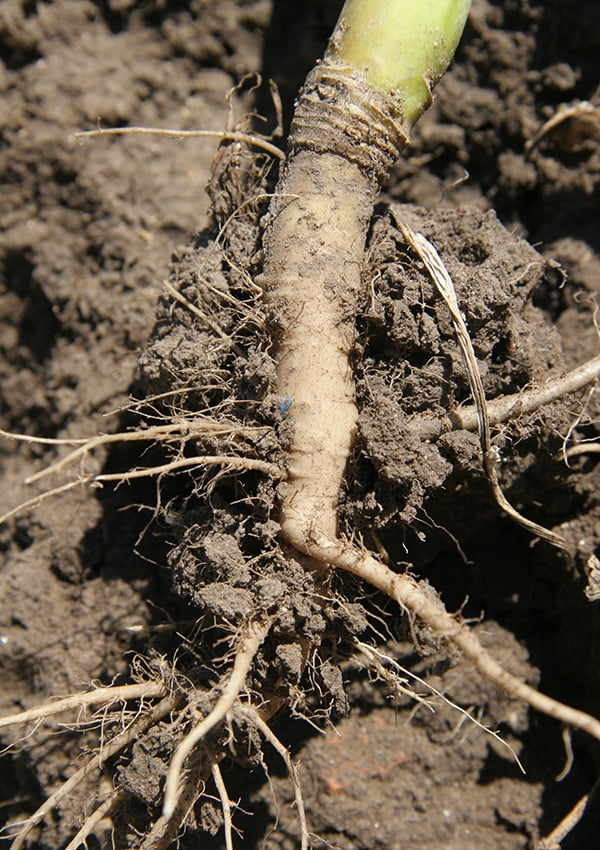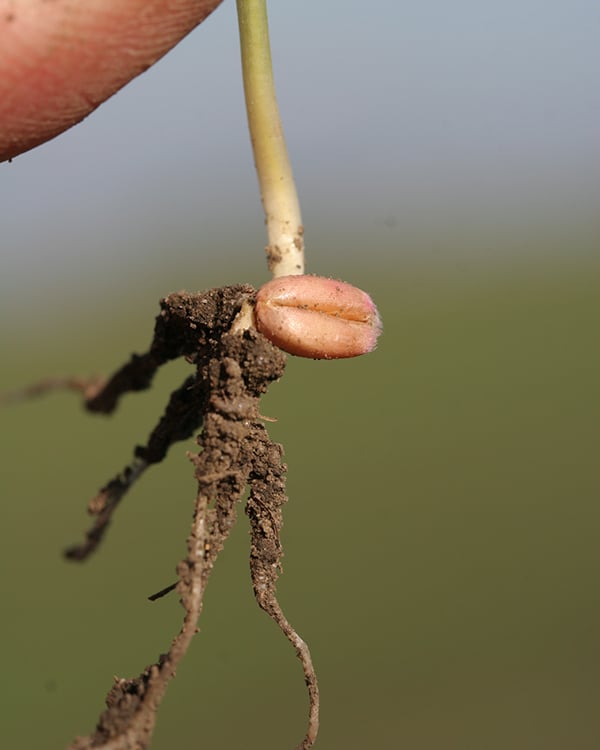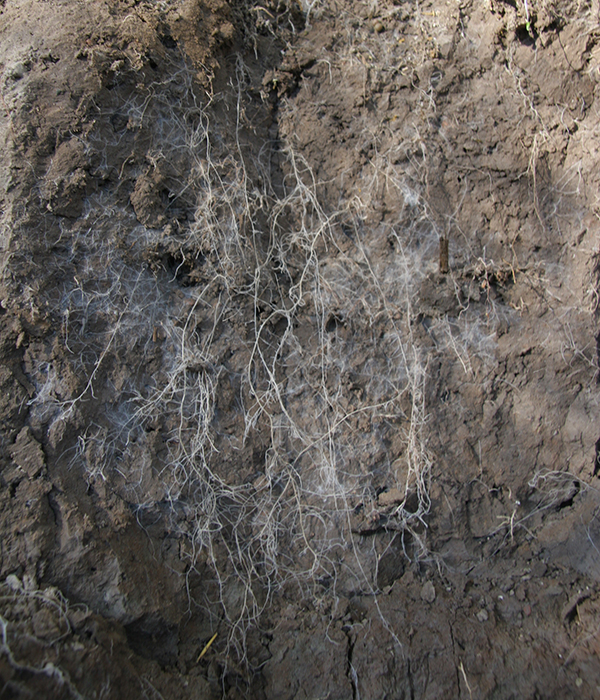The roots anchor the plant in the soil and provide it with water and nutrients. The root system of a plant is usually just as genetically predetermined in terms of its shape and appearance as the leaves and stems above the soil. However, the environment in the soil (sand, clay, etc.) limits expansion of the roots. In a well-drained clay soil with good soil structure, the roots of certain plants can reach down to 2-3m.
Two different systems

Dicotyledons, for example oilseed crops, have a root system consisting of a main root with side roots.

Monocotyledons, for example cereals, have 3-5 primary roots that come from the germinating seed and crown roots that are formed from the basal parts of the stem. Around 20-30cm behind a front of unbranched roots, the plant advances with a zone of very branched roots.
High speed but limited strength
Roots move through the soil profile at a rate of around 0.5-3.0cm/day in their period of fastest growth. However, the roots are dependent on cracks and holes in the soil for their growth, since their ability to create their own channels is rather limited. In a wet soil, the root tip can displace soil particles, but in a dry soil the roots are forced to use pores with a diameter that is greater than their own. Mechanical resistance in the soil is reflected by thickening of the root tip and branching. Roots and earthworms help each other in that the roots use worm tunnels and the earthworms use old root channels when they are moving through the soil profile.
Fine threads
Roots are very effective at taking up nutrients and water from the soil. At the very point of the root tip there is a root cap and behind this is the zone where the cells divide and elongate. Behind this, there is a zone with fine root hairs that have a diameter of around 0.01mm and a length of 1-10mm. These root hairs greatly increase the capacity of the root to take up water and nutrients. For example, a wheat root with a diameter of around 0.5mm can have an absorbing surface of 5cm2 per cm of root. The root hairs release mucus, which further increases the contact with the soil.

100m of roots in one litre of soil
The efficiency of the root system in taking up water and nutrients is a function of how well the roots can penetrate the soil; often measured as root length per cm3 of soil. In cereals it is common to find 10cm roots/cm3 soil in the topsoil, while the number decreases to 0.1cm roots/cm3 soil at 1m depth in the subsoil. This means that one litre of topsoil contains 100m of roots, while one litre of subsoil contains only 1m of roots at 1m depth in the soil profile. Root length per unit are is also amazingly high.
Anyone standing in one square metre of a sugar beet field has around 10km roots under their feet. Winter wheat has an even higher root density, with 30km roots per square metre. This means that one hectare of winter wheat is served by 300,000 km of roots under the soil surface.
Dictionary:
Monocotyledons = plants that germinate from seed to produce a seedling with only one seed leaf (cotyledon), e.g. grasses and cereals
Dicotyledons = plants that germinate from seed to produce a seedling with two seed leaves (cotyledons), e.g. oilseeds, peas, beans, linseed, sugar beet, etc
Subsoil = the part of the soil profile that comes directly under the topsoil and that is often unaffected by normal soil tillage to ploughing depth, but is sometimes tilled by deep loosening. The boundary between topsoil and subsoil is often clearly visible in ploughed soil as a plough pan, where plough shares and tyre slip have compacted the soil




